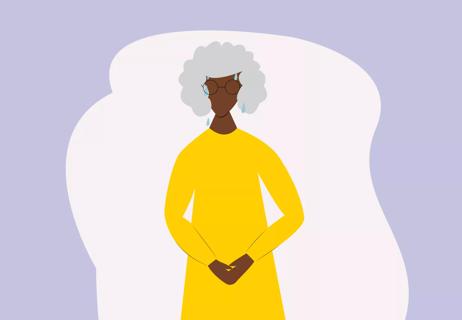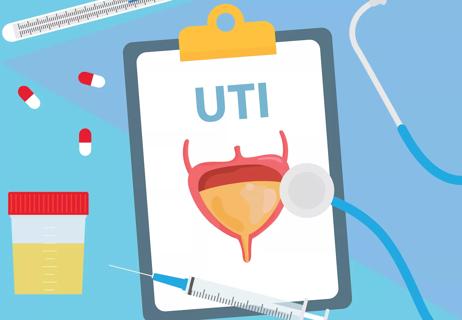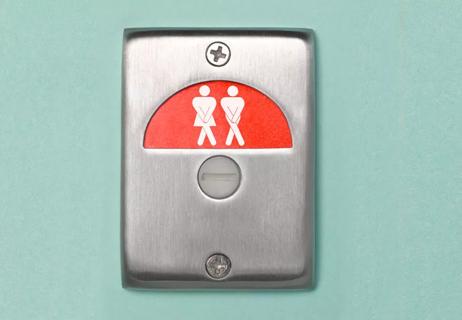Staying hydrated and peeing after sex can help prevent this common post-sex condition

Getting a urinary tract infection after sex is, unfortunately, a common occurrence. Some urinary tract infections (UTIs) are painless, but that’s not typical, and they’re usually not fun. (If you know, you know.)
Advertisement
Cleveland Clinic is a non-profit academic medical center. Advertising on our site helps support our mission. We do not endorse non-Cleveland Clinic products or services. Policy
Urologist Sandip Vasavada, MD, explains why UTIs happen after sex, who gets them the most and how to prevent them.
UTIs, sometimes called bladder infections, happen when bacteria get into your bladder. Your bladder is like a little holding tank for urine, and bacteria can attach to the bladder wall. They enter through the opening of your urethra, the tube that moves urine out of your body.
“If the bacteria don’t clear from the bladder, they settle in and multiply, and an infection happens,” Dr. Vasavada explains.
Anatomy affects your risk of UTIs. Dr. Vasavada says that anyone can get a UTI, but women are more likely to get them.
“The female urethra is only 3 to 4 centimeters long, so the bacteria only have to travel a short distance from the opening into the bladder,” he continues.
Men typically get fewer UTIs because their longer urethra helps keep bacteria out of the bladder.
“Although if you have prostatitis (prostate inflammation), that can also lead to UTIs,” notes Dr. Vasavada.
You may be more prone to getting UTIs if you:
If you’ve had multiple UTIs, you’re probably familiar with the telltale signs.
Advertisement
“The hallmark symptoms of UTIs are dysuria (burning) with urination, along with increased urgency and frequency of urination,” shares Dr. Vasavada. “If you have urgency and frequency without the burning, it’s typically not a UTI.”
Less common symptoms include urine that’s:
“Lower-urinary tract infections don’t tend to progress to a more serious infection, but they may make you miserable,” he says.
But a UTI can progress by moving up the urinary system into your kidneys. With this unlikely but more severe infection, you also may have:
You can certainly develop a UTI without any sexual activity, but post-sex UTIs are common. That’s because you have lots of bacteria on the outside of your genitals.
Sexual activity moves that bacteria around and it can end up at the opening of your urethra, causing an infection.
Yes, you can get a UTI from oral sex. During oral sex, mouth and genital bacteria can get into your urethra and lead to a UTI. Essentially, any type of sexual activity can cause a UTI.
Again, activity around your genitals may move bacteria to your urethra, where it can travel to your bladder.
It may seem like your partner is giving you a UTI during sex. But that’s not entirely accurate. A UTI isn’t a sexually transmitted infection (STI). Here's the difference.
“You can still have sex with a UTI, but most people are pretty miserable when they have one, so sex may be the last thing on their mind,” says Dr. Vasavada.
When you’re trying to clear the infection, frequent urgency to pee could also put a damper on intimacy. Sex typically won’t affect the course of the infection while you’re treating it.
But if you haven’t gotten treatment for the UTI yet, having sex could make it worse.
Try these simple steps to avoid a post-sex UTI:
During postmenopausal years, you’re at higher risk for UTIs. If menopause is behind you and you’re sexually active, UTIs may be frequent visitors. But there’s help.
“Vaginal hormone therapy is very safe and effective for reducing UTIs after menopause,” says Dr. Vasavada.
Advertisement
Some people become very prone to UTIs after sex. For recurring UTIs, your provider may give you a preventive antibiotic to have on hand and take within 12 hours of sexual activity.
Even when you do your best to prevent a post-sex UTI, sometimes they happen anyway. What do you do next?
“Your body may be able to rid itself of the UTI with a lot of water and some ibuprofen for the pain,” says Dr. Vasavada. “You don’t have to get treated, but not doing so may prolong the agony.”
Antibiotics are the gold standard for UTI treatment. Typically, it’s a short course of just three days of pills.
“We try to use the more benign antibiotics instead of the strongest ones to minimize the risk of antibiotic resistance, where the antibiotic no longer works,” he explains.
Once your UTI is gone, it’s important to get back to prevention practices to avoid getting another one.
If you know the misery of repeated UTIs, there’s a small ray of hope in the form of a potential vaccine.
“These are available in some European countries, and they’re going through the approval process in other countries,” shares Dr. Vasavada. “The vaccine targets the most common bacteria in UTIs. The results so far are pretty good, but there are still questions to answer about safety.”
Advertisement
Learn more about our editorial process.
Advertisement

Cranberry juice and cranberry pills may prevent future UTIs when taken consistently

Yes, but male UTIs are often the result of another issue like diabetes, prostate problems or kidney stones

Only antibiotics will cure a UTI, but home remedies could help prevent future infections

A bladder infection is definitely a UTI ... but not all UTIs are bladder infections

Signs to look out for include pain and changes in frequency or urgency

Recurrent urinary tract infections are most common in women, seniors

The ins and outs of urinary tract infections

Start having sex about 72 hours before ovulation, then at least every other day during your fertile window

Start having sex about 72 hours before ovulation, then at least every other day during your fertile window

Attachment theory suggests that your earliest relationships shape connections throughout your life

It isn’t a recognized mental health disorder, but research shows that problematic social media use can negatively affect your mental health, self-esteem and sleep